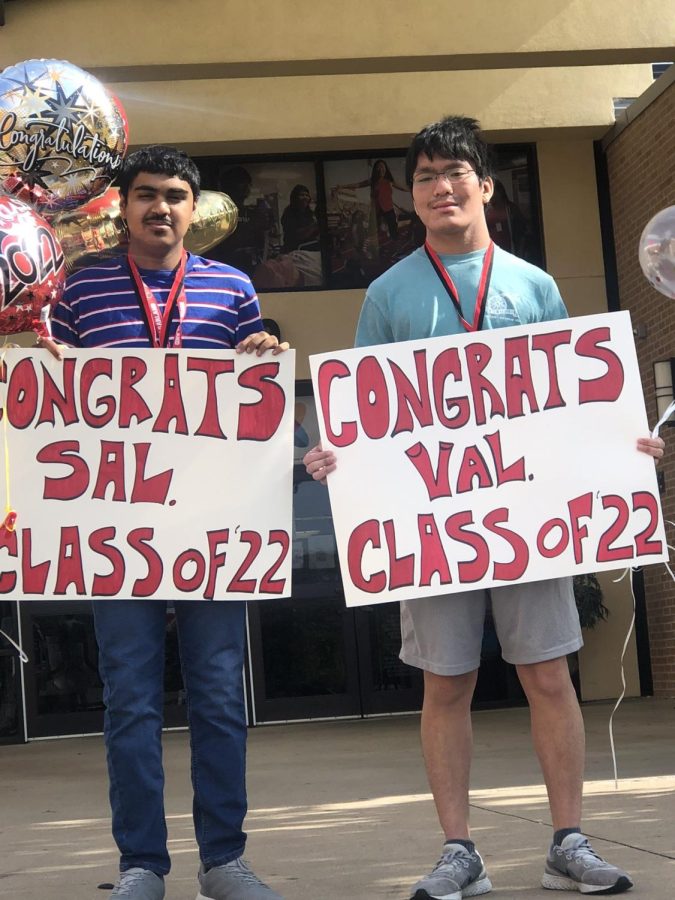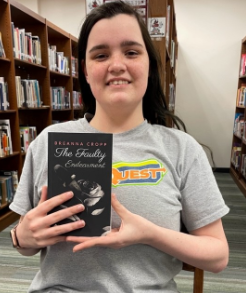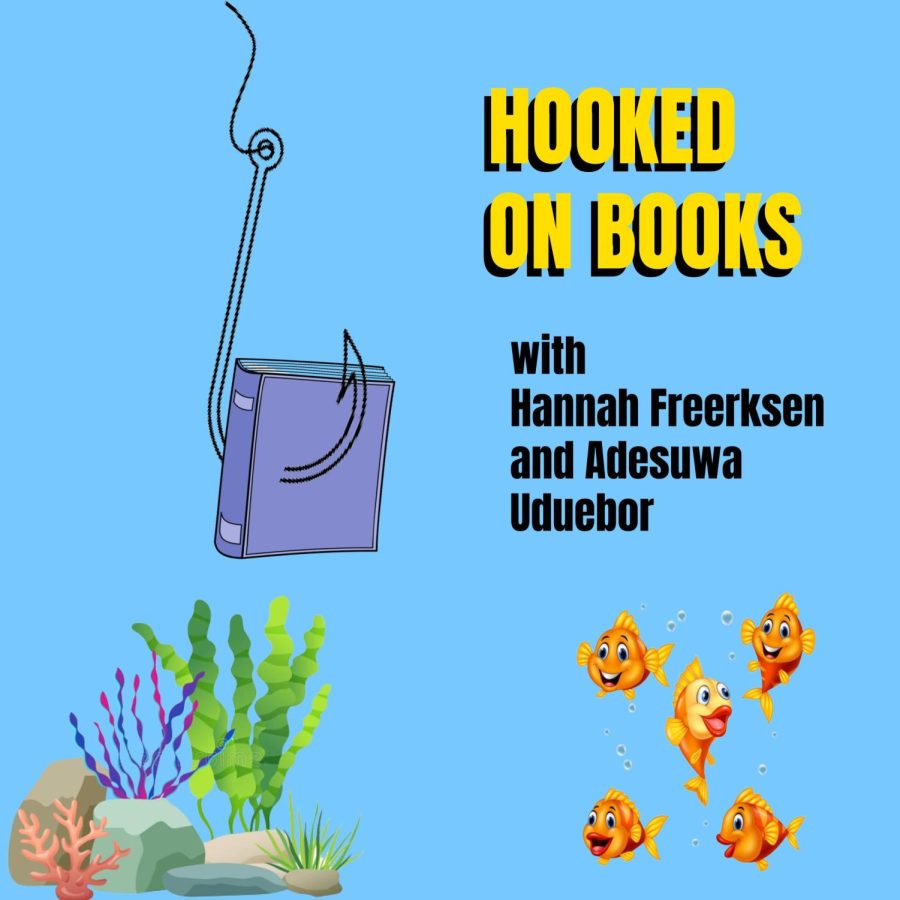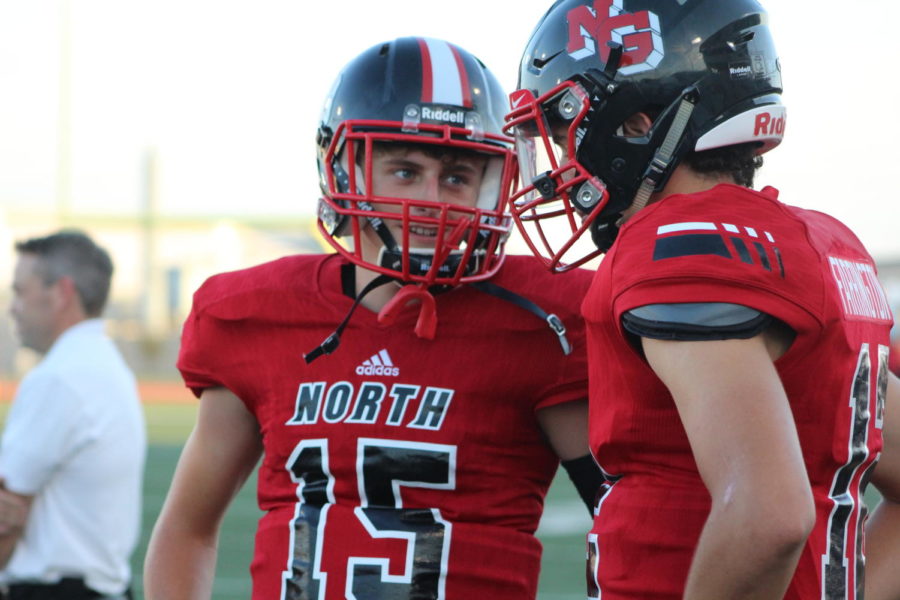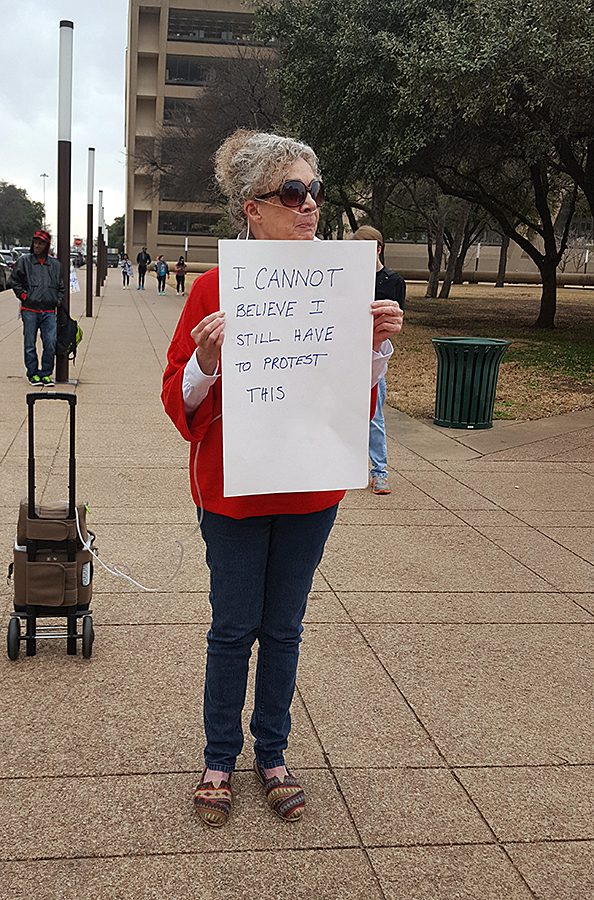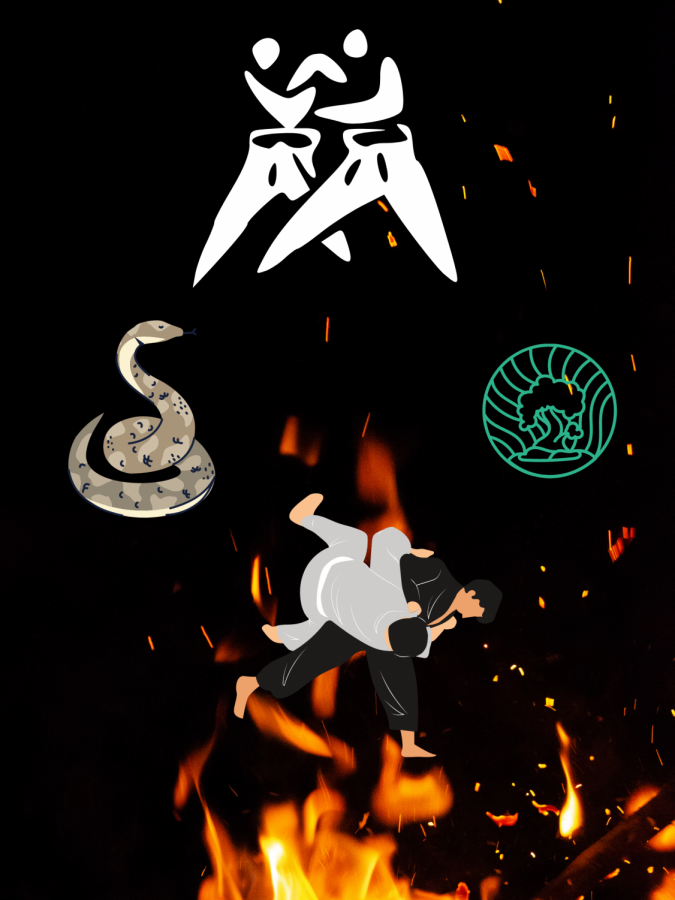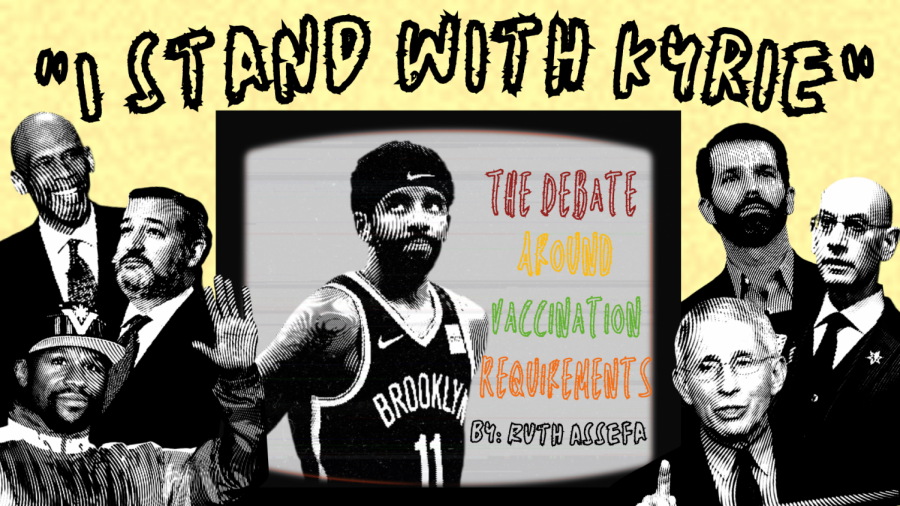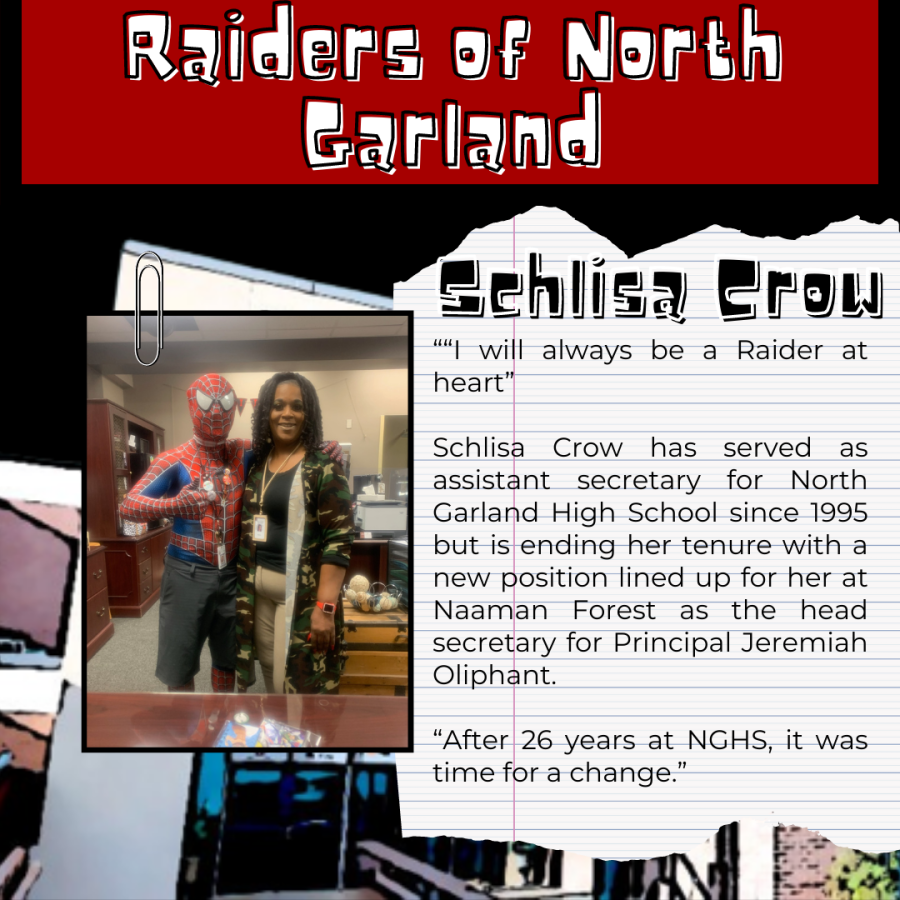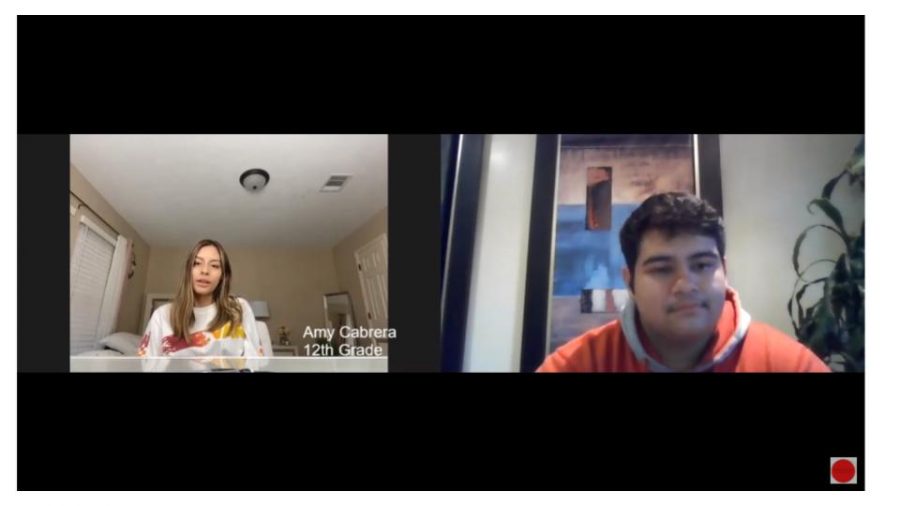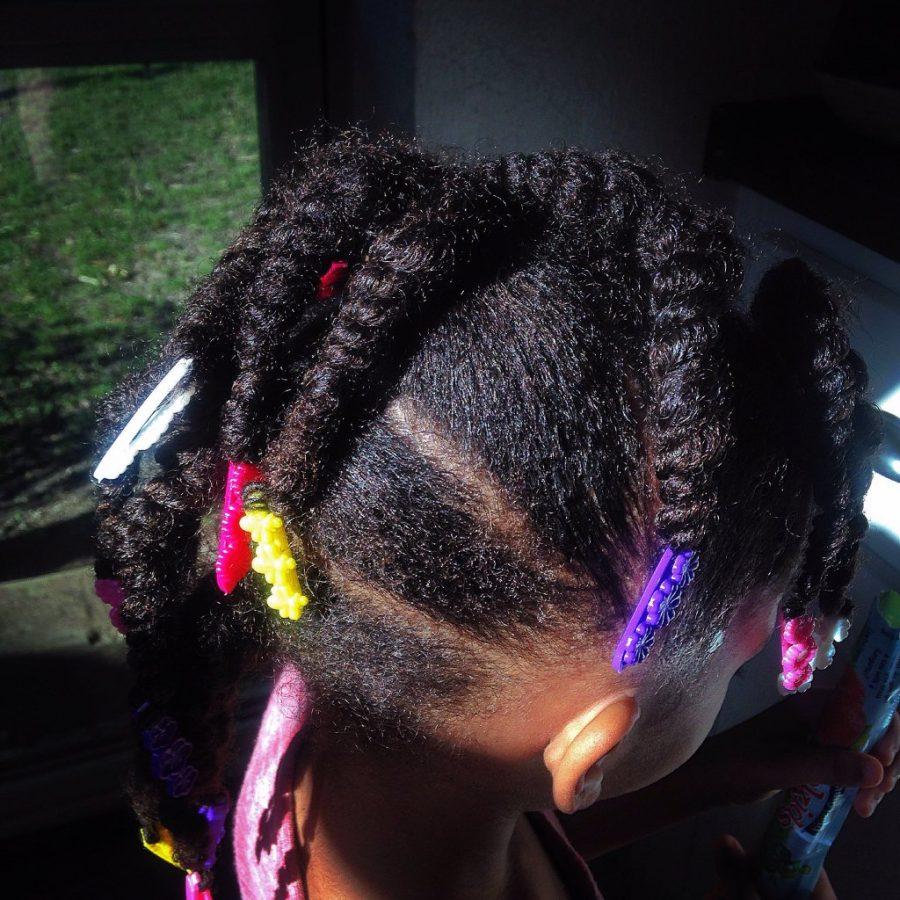Foster father’s insight
Viral tweet leads to reflection
The cries of a hungry newborn baby broke the silence of the sleepy house. Bleary-eyed and still groggy from sleep, English teacher Matt Clarke stumbled through the early morning darkness and made a bottle for the crying child. He reached for his phone to check the time, but his face was instead illuminated by a stream of Twitter notifications that seemed never-ending.
Clarke and his wife started fostering and adopting children seven years ago. In those years, they have cared for 12 children of varying age, race and background. On Sunday, March 20, Clarke posted a picture of his most recent foster daughter’s hairstyle with the caption, “Just did my first set of twists. Not bad for a white dad, right? Had some guidance. Building my skill diversity.” Within 48 hours, Clarke’s post had spiked to 22,600 likes and 12,700 retweets, with his follower count jumping from roughly 500 to 2,700.
“I didn’t expect it to [go viral],” Clark said. “I thought I was sharing it with the 500 people who follow me, and the 200 that actually ever pay attention to what I put on [Twitter]. I don’t understand why [it went viral], but my best guess is that it has to do with the fact that I am a white father, who posted a picture of a clearly African-American girl, whose hair I did in a very basic African-American style, and did a semi-decent job. I think that their reaction to that really just comes down to culture.”
Clarke said he simply posted the picture because he had surprised himself with how well he had done for his first try. He expected around 20 likes and nothing more, so he was surprised when he received notifications that he was the top Twitter trend in Dallas, Atlanta and Philadelphia, according to a Twitter trend tracker called Trendsmap.
“I don’t expect that this is going to be my big break and that I’m going to become famous and I won’t have to teach for a living,” Clarke said. “I don’t know, it’s just weird. I mean, I think about all of the good, solid and meaningful stuff out there that’s not going viral, and there’s so much negative stuff that is going viral. It’s insane.”
Overall, Clarke said the responses to his post were positive feedback and support, along with some criticism that he said will help him grow. He hopes to use his new Twitter popularity as a medium of positivity for all of his followers. Part of Clarke’s teaching philosophy is that people learn best when connected emotionally, intellectually and socially, and the purpose of his Twitter page has always been his way of attempting to do just that.
“I believe that hatred is never external; hatred is internal,” Clarke said. “So for people to post hateful things – racist things – about my kids, I don’t take that personally, because I feel like that’s a personal issue that they have, and the way that they’re working it out is by using it offensively. For everyone that has made a stupid comment, there are probably 20 to 30 people that have said something positive and encouraging, or defended my action of doing my African-American foster daughter’s hair. They defended me. That just kind of validates my belief that 95 percent of the world is good, and then the other 5 percent just kind of screws it up.”
Clarke and his wife began fostering the little girl from the post during Spring Break, and she was recently able to go back to her home and be with her family. According to Clarke, the hardest part of foster care is the heartbreak and grief of letting the children go back home again, after building such a strong relationship with them; however, he said there is still much joy in raising foster children.
“If it’s done well, the best part is you get to hopefully play a part as these children go back to their families and break cycles of poverty, injustice, lack of education, family violence, substance abuse and things like that,” Clarke said. “These kids have the ability to literally go back and change their families, just by realizing that there is a different way and it doesn’t have to be like it’s always been.”
Before Clarke and his wife welcomed the little girl into their home, she had been staying in a foster home in Houston, far away from her sister who was living with Clarke’s pastor in Garland. When Clarke and his wife found out about this, they decided they would offer to take her in, even with their two sons and one foster baby already at home. This allowed the two sisters to have weekly playdates, rather than the monthly visits planned by Child Protective Services (CPS).
“She is so cute, it’s heartbreaking,” Clarke said. “When they were removed, no one could find a foster home that would take her. No one, in an area of over two million people. No foster homes would take a single 3-year-old girl who never says a sentence without a please or thank you. But this girl is turning out well in spite of everything.”
According to Clarke, foster care is important because of its direct influence in every aspect of society, including employment, mental health, education, drop-out rate and poverty. Although the system for fostering is not always perfect or easy for children, Clarke believes it is the best system available.
“Foster care is scary,” Clarke said. “I can know that she is safe. I can know I am going to take care of her and she will be fine. But she has to learn that and know that she’s okay, that when she is hungry, she can ask for something to eat and she’ll get it. She has to learn that when you say it, she can believe it. We have pregnant moms saying, ‘I can’t drink Diet Coke because I’m pregnant.’ All of our kids saw worse – before they even entered into the world – than what you could ever do with a Diet Coke. But kids are resilient; kids can turn out really well in spite of their circumstances. The grace of foster care is that foster care is for kids.”
Clarke said that high school students can support foster care by becoming friends with foster parents, getting a background check and receiving their CPR certification. Doing so would allow them to become babysitters for foster children and provide a break for the foster parents.
“People have this media-fueled ideal about foster care, that these kids set fire to carpets, smear poop on the walls and they only use four-letter words,” Clarke said. “It’s just this idea that these foster care kids are dangerous and angry, and that foster parents are just jerks and they’re all in it for the wrong reasons and they’re neglectful and abusive, just like the families that a lot of these kids are coming from. But the only way to break a stereotype is to build a relationship. Until then, you’re only going to be judgmental based on your own prejudices.”
Ultimately, Clarke believes that foster care and adoption take faith and obedience to God above all else, even when obedience requires extremely difficult circumstances. Clarke said he was shown this with his very first adopted son, before he and his wife were even looking into foster care and had only been married for four years.
“My wife came to me and said she was praying, and she had a vision that the Lord was going to give us a black baby boy that was abandoned, and that we were going to name him Isaiah,” Clarke said. “I told her not to go tell people that, because when you tell people you have heard something from the Lord, that’s a real big thing. We decided we would pray about it, so we kind of put that in the back of our minds. We were having fun; we didn’t have any kids. We didn’t even know what type of adoption we wanted to do.”
After deciding on foster care, Clarke and his wife soon received a call, asking if they would care for one of a few African-American babies that had been abandoned at the hospital. They agreed, but knew nothing more about the child before traveling to the CPS office and meeting with the case worker.
“All we knew was that he had been in a foster home for four months, and all his paperwork just said ‘baby boy,’ because he was abandoned at the hospital,” Clarke said. “But chances were, they hadn’t been calling him ‘baby boy,’ so I asked the nurse, ‘What have you been calling him?’ She looked at us, and she said, ‘Isaiah.’ I was holding him in my arms then, and I just started crying.”
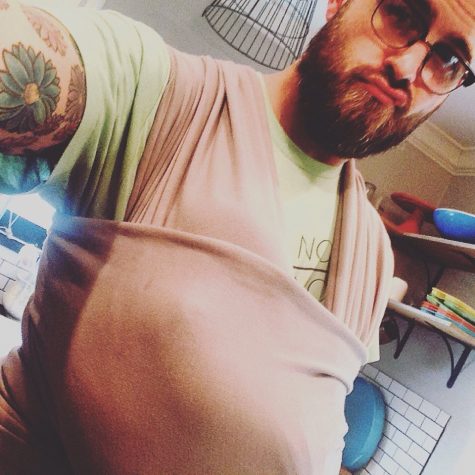
“#DadSoHard #DaddyDuckFace Wearing a baby like it’s my job. #BounceBounce”

